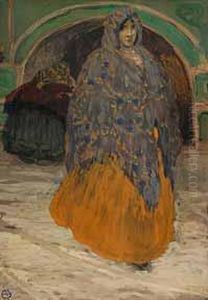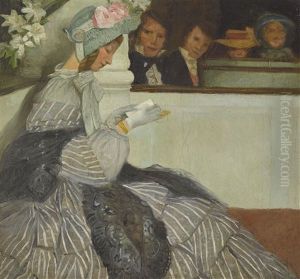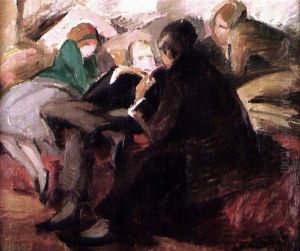Alexander Von Salzmann Paintings
Alexander von Salzmann, also known as Alexandre Salzmann, was a Russian-born artist, who became known for his revolutionary work in stage design and lighting. Born in Saint Petersburg, Russia, in 1874, Salzmann was of German descent and was part of the cosmopolitan cultural milieu of the late 19th and early 20th centuries.
Von Salzmann's early life and training are not extensively documented, but it is known that he had an interest in the arts from a young age. His work in theatre began in Russia, but he later moved to Western Europe. He became associated with the innovative ideas of Adolphe Appia and Edward Gordon Craig, who were pioneering new approaches to stage design and the use of light in theatrical productions.
Salzmann is perhaps best known for his work with the Festspielhaus Hellerau, a theatre in Dresden, Germany, which was one of the first to be built specifically with modernist principles in mind. In Hellerau, he collaborated with choreographer Émile Jaques-Dalcroze, who developed eurhythmics, a method of teaching rhythm through movement. The work that Salzmann created for the Festspielhaus Hellerau was groundbreaking; he used indirect lighting and experimented with light to create mood and atmosphere, which was a departure from the more straightforward, illuminative lighting techniques that had been used previously.
In addition to his work in theatre, Salzmann was also involved in the visual arts community. His contributions to stage design were influential in the development of modernist aesthetics in the performing arts. His innovative approaches to lighting prefigured many later developments in theatrical technology and design.
Salzmann's career was impacted by the outbreak of World War I and the subsequent turmoil in Europe. Like many artists of his generation, he found that the war disrupted his work and opportunities. He continued to work when and where he could, but his later years were less well-documented than his early groundbreaking contributions.
Alexander von Salzmann passed away in 1934, leaving behind a legacy of innovation in theatre design and lighting. Though he may not be as widely recognized as some of his contemporaries, his contributions had a lasting impact on the way lighting is used in the performing arts and opened up new possibilities for stage design that continued to influence theatre production throughout the 20th century and beyond.









